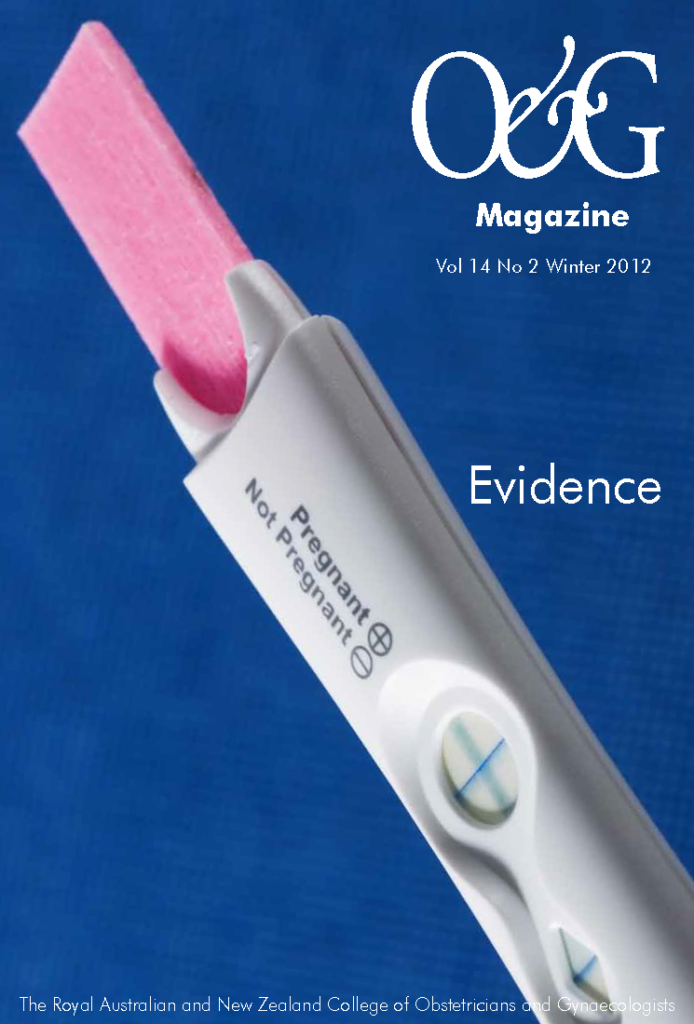Which approach, vaginal or abdominal, is best and on what evidence?
Although hysterectomy remains a signature procedure in gynaecology, our approach has been in a state of flux over the past ten years. Analysis of Medicare data for hysterectomy for non-malignant indications shows that the total number of such procedures has fallen 20 per cent in the past ten years (2001–2011). Relative abdominal hysterectomy rates have reduced from 49 per cent (2001) to 34 per cent (2011). Hysterectomy via the vaginal approach has remained constant at 35 per cent (2001–2011). However, the rates of hysterectomy with some laparoscopic component has risen from 16 per cent (2001) to 31 per cent (2011). It would appear we are evolving, albeit slowly, from the abdominal to the laparoscopic approach for hysterectomy. Unfortunately, relative hysterectomy rates in the public sector are not universally available. We, however, have no reason to believe the statistics for the private sector have not been duplicated in our public-health system.
What is the evidence to support our various approaches to this procedure? The widely held view in gynaecology supports vaginal hysterectomy (VH), over an abdominal hysterectomy (AH), where feasible for non-malignant conditions. A recent Cochrane review1 has favoured VH over AH, citing reduced infective morbidity and earlier return to normal activity. These findings have been broadly supported in the literature over a number of years. In comparing VH to LH, Cochrane1 indicated that LH procedures were slower and resulted in increased blood loss. VH is undoubtedly currently regarded as the approach of choice for non malignant indications1,2 where possible. When VH is not feasible, then AH or LH may come into play.
Following the introduction of laparoscopic hysterectomy in 1988, by Harry Reich, many gynaecological procedures are now almost universally performed via the laparoscopic approach. With two traditional approaches to hysterectomy (AH and VH), the field of options became increasingly crowded with the introduction of the laparoscope. Many believe that VH rates would rise dramatically over this period with falling AH rates. However, it would appear this has not occurred with the rates remaining relatively stable in Australia for VH at 35 per cent. The drop in AH rates has been taken up by the laparoscopic option.
Although the Medicare data show a 31 per cent incidence of laparoscopic assistance in hysterectomy, we are unable to clearly ascertain which procedures were performed, specifically laparoscopically assisted vaginal hysterectomy (LAVH), or total laparoscopic hysterectomy (TLH). With the introduction of the laparoscope into hysterectomy, LAVH was widely practiced in the 1990s. However, devotees of this approach have refined the technique to performance of their procedure totally laparoscopically (TLH). This technique allows improved visualisation, access to large uteri with no cervical descent required and facilitates concomitant procedures for other pelvic pathology, thereby covering a range of situations not accessible vaginally.
As expertise in laparoscopic hysterectomy has evolved, comparison of TLH and VH has become possible.3 Such recent randomised trials4,5 have produced competing outcomes.
Gentry et al6, performed a meta-analysis of five randomised controlled trials (RCTs), comparing TLH (n=332) and VH (n=331). No differences in blood loss, conversion to laparotomy or urinary tract injuries were noted. TLH was associated with reduced post-operative pain scores and reduced hospital stay, but took longer to perform. Higher urinary tract injury rates have been reported in laparoscopic hysterectomy, in particular ureteric injury and fistula formation.7 Interestingly, this meta-analysis failed to find a difference between these groups, but did concede that the study was underpowered for such rare complications.
Currently, VH may be the preferred approach. However, what does the future hold? As the incidence of AH inevitably declines, how will the popularity of VH and LH fare. VH is currently taught by older, traditional gynaecologists. As time passes, will the younger breed of surgeons take up and teach this approach? It is very likely that abdominal hysterectomy will become relatively uncommon.
LH is currently being developed and taught by a number of endoscopic units throughout Australia. As such Fellowship programs undoubtedly spread; LH will increase its popularity, producing gynaecologists who will perform the bulk of the gynaecological surgery in the future. Although having sufficient gynaecologists trained in advanced laparoscopic surgery to supervise Fellowship programs may initially appear negative, new advances such as robotic surgery may shorten the current learning curve for LH and thereby increase its popularity.
As the Medicare data suggest, the numbers of hysterectomies performed in Australia appear to be reducing over time. This may well make it difficult for many gynaecologists to be both adequate laparoscopic and vaginal hysterectomists. It is more likely that the decision will be made to favour one or another in the majority of the cases.
There are a number of different considerations that govern which type of hysterectomy is performed. Training, confidence and competence are significant factors. Evidence-based medicine should be considered. In the future it is very likely that we will either evolve into predominantly laparoscopic or vaginal surgeons.
References
- Nieboer TE, Johnson N, Lethaby A, et al. Surgical approach to hysterectomy for benign gynaecological disease. Cochrane Database Syst Rev 2009:CD003677.
- Falcone T, Walters M. Hysterectomy for benign disease. Obstet Gynecol 2008;111:753-67.
- Candiani M, Izzo S. Laparoscopic versus vaginal hysterectomy for benign pathology. Curr Opin Obstet Gynecol 2010;22:304-8.
- Ronzoni S, Marconi A. Laparoscopic vs vaginal hysterectomy for benign pathology. Am J Obstet Gynecol 2009;200:368. e1-7.
- Ghezzi F, Uccella S, Cromi A, et al.Postoperative pain after laparoscopic and vaginal hysterectomy for benign gynaecological disease: a randomized trial. Am J Obstet Gynecol 2010;203:118.e1-8.
- Gendy R, Walsh CA, Walsh SR, et al. Vaginal hysterectomy versus total laparoscopic hysterectomy for benign disease: a metaanalysis of randomized controlled trials. Am J Obstet Gynecol 2011;204:388.e1-8.
- Forsgren A, Altman D. Risk of pelvic organ fistula in patients undergoing hysterectomy. Curr Opin Obstet Gynecol 2010;22:404-7.






Leave a Reply